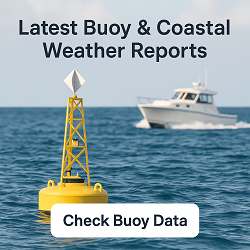Dell Rapids, SD Weather Forecast and Current Conditions
Current Conditions From Nearby Station

Feels Like 58°F
at
Point Forecast at a Glance







7-Day Temperature Trend
Week Ahead Summary
Variable high temperatures through the week, ranging from 42°F to 55°F. Some precipitation possible with wintry mix on at least one day.
Climate Context
This week's forecast shows temperatures running 4°F above the historical average for November. Normal highs for this period are around 43°F with lows around 23°F.
This Date in Weather History
1964 - With the help of a fresh three inch cover of snow, the temperature at Ely, NV, dipped to 15 degrees below zero to establish an all-time record low for the month of November. That record of -15 degrees was later equalled on the 19th of November in 1985.
Dell Rapids, SD 7 Day Weather Forecast Details
Friday Nov 14

Night: Cloudy, then becoming partly cloudy toward daybreak, with a low around 44. West southwest wind 5 to 10 mph becoming north northwest after midnight.
Saturday Nov 15

Day: A chance of sprinkles before 7am. Mostly sunny, with a high near 55. North northwest wind 10 to 15 mph, with gusts as high as 20 mph.

Night: Mostly clear, with a low around 29. North northwest wind around 5 mph becoming calm in the evening.
Sunday Nov 16

Day: Mostly sunny, with a high near 50. North wind 5 to 10 mph becoming east southeast in the afternoon.

Night: Mostly cloudy, with a low around 35. East southeast wind 5 to 10 mph.
Monday Nov 17

Day: A slight chance of rain before noon, then a chance of rain and snow. Mostly cloudy, with a high near 44. East southeast wind 10 to 15 mph, with gusts as high as 25 mph. Chance of precipitation is 50%. Little or no snow accumulation expected.

Night: A chance of rain and snow before midnight, then a slight chance of rain. Cloudy, with a low around 30. Chance of precipitation is 50%.
Tuesday Nov 18

Day: Mostly cloudy, with a high near 42.

Night: Mostly cloudy, with a low around 31.
Wednesday Nov 19

Day: Partly sunny, with a high near 49.

Night: A 30 percent chance of rain. Mostly cloudy, with a low around 34.
Thursday Nov 20

Day: A 20 percent chance of rain. Partly sunny, with a high near 46.

Night: A 20 percent chance of rain. Mostly cloudy, with a low around 31.
Friday Nov 21

Day: A 20 percent chance of rain. Partly sunny, with a high near 45.
About Dell Rapids, SD
Content from Wikipedia, licensed under CC BY-SA 3.0.
How We Provide Better Local Weather
Current conditions: We use the nearest available station to your location - including professional MESONET/MADIS and local weather stations - often miles closer than regional airports.
Forecasts: National Weather Service point forecasts predict for your specific area, not broad regional zones, making them far more relevant to your location.



